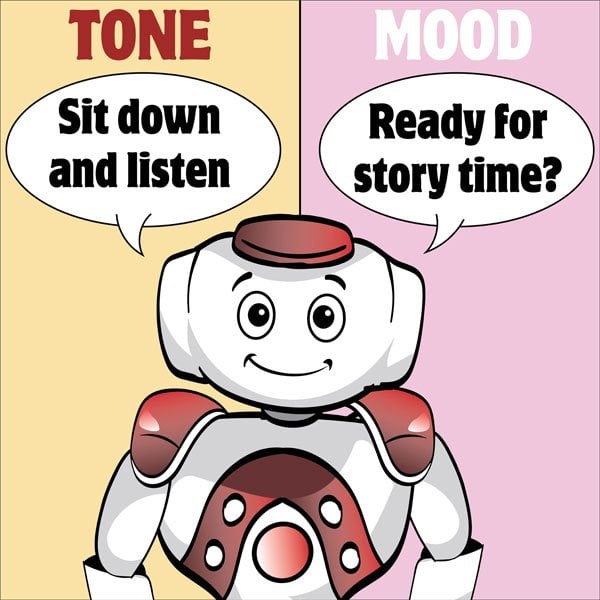Lesson Modules
Teaching Tips:
As a teacher, you know your students. Therefore use these lessons as a guide and feel free to make adjustments that facilitate your students learning.
Materials to run lesson:
- Pepper robot
- Student computers (either individual or 1 per small group)
- Teacher computer
- Choregraphe program on Teacher/Student computers
- Choregraphe file for this lesson
- Projector
- A place for projection (projector screen/large blank wall space)
This module is for instructors only. See the Teaching Tips for details.
Teaching Tips:
- Project the observation questions on the Class View. Tell your students that “We are going to listen to the Three Little Chickens story again and then answer the questions so as you listen to the story, think about your answers to the questions”.
- Have students make a circle around the robot to listen to the story.
- Run this Choregraphe file on Pepper for this lesson.
- Pick 1 student to respond to the robot when the robot asks “Should the chickens trust the wolf and let him in?”. Make sure the student is facing the robot when they respond (yes/no).
- Play the “Three Little Chickens” story using the robot.
- Show the Class View directions on how to access the observation questions.
- Direct students to answer the observation questions on their computers.
- Once students are finished, show their responses on the Class View and facilitate a conversation.
As you watch, think about your answers to the following questions.
Teaching Tips:
After you read and discuss the 2 passages with your students. Read the 1st passage again but this time play this music in the background as you read. Then have a discussion about how adding the music may have changed their mood as they were listening to the story.
Now read the 2nd passage and play a music in the background.
HINT: If your students are younger and may get scared read the passage in a more monotone voice. Then have a discussion about how adding the music may have changed their mood as they were listening to the story.
Then have students work in their small groups. Have them choose what emotion they want their audience to experience during their story (sad, happy, mad, etc.). Then write a story. Once the students are finished have them share their stories. After the students share their stories have a class discussion around what emotion they experienced during the story. For younger students: write a few possible moods they could create to help them plan (scary, happy, mad, etc.)
Show the students the goal on the class view.
Have students begin planning what mood they want their audience to feel during their story and what words they will use to create this mood.
Teaching Tips:
Have students look over the Choregraphe skills they have learned so far on the Class View. You can either choose based on your observations, or have the students tell you which skill(s) they would like to review (survey on student view).
Encourage them to add more functions to their story.
You have learned about how storytellers create mood through word choice and sounds. You will now choose a mood you want in your stories and adjust the word choice and sounds to create that mood.
Teaching Tips:
If the students are struggling to get the robot to do what they want it to do - do not correct them. Instead, provide them with guide questions to assist in their development of independent problem solving skills. This takes time to build so be patient with your students.
Some examples of guide questions:
- What is not working the way you want it to?
- Let’s look at your code together. Can you show me where you think the problem might be?
- What resources could you use to find the solution to your problem?
Additional Activities:
- Have students show each other their stories.
- Students can provide feedback on the stories.
If you are struggling to get the robot to do what you want it to do - do not feel bad about the error you made. Developing independent problem solving skills takes time to build so be patient with yourself.
Ask yourself the guide questions:
- What is not working the way I want it to? Can I ask someone to look at my code with me?
- Where do I think the problem might be?
- What resources could I use to find the solution to the problem?
Teaching Tips:
Show the questions on the class view. After students have finished responding to the questions, facilitate a class discussion around the questions. For question #3, on the class view if you click the "Show Results" button at the bottom right of question 3 - the students' responses will be represented through a word cloud.
Store student files: Put the student files on a thumb drive or store them in some way so that the students can continue working on their project in the next lesson.
Computers/Tablets: Make sure all student computers/tablets are plugged in.
Suggestion: You can have a showcase day where students present their final projects.

